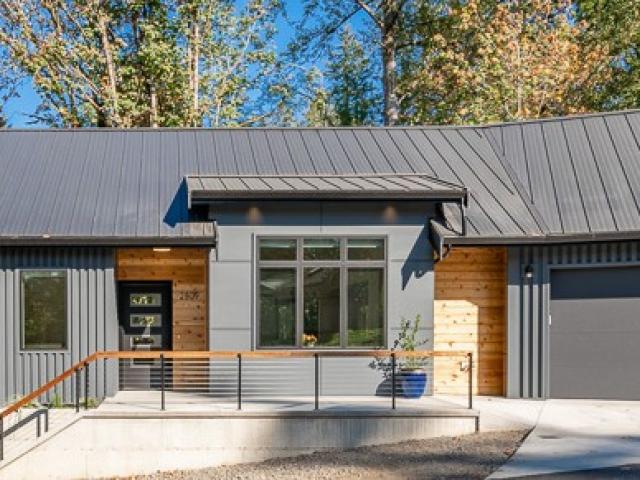
Key Design Elements of Minimalist ZERH-Certified Homes
- Simple and Compact Floor Plans: Minimalist homes often feature open floor plans, which reduce the need for unnecessary walls and hallways. This compact design also helps to minimize energy consumption.
- Natural Lighting: Large windows and strategically placed skylights maximize natural light, reducing the need for artificial lighting and heating.
- Insulation and Air-Tight Construction: Well-insulated and air-tight homes minimize heat loss and gain, reducing the need for heating and cooling.
- High-Performance Windows: Energy-efficient windows with low-E coatings and gas fills help to reduce heat transfer and minimize energy loss.
- Renewable Energy Systems: ZERH-certified homes often feature on-site renewable energy systems, such as solar or wind power, to generate electricity and reduce reliance on the grid.
Examples of Minimalist ZERH-Certified Homes
- The Net-Zero Energy Home: This home, designed by architect Steve Glenn, features a simple and compact floor plan, with large windows and skylights to maximize natural light. The home is powered by a 5-kW solar array and achieves a net-zero energy bill.
- The Eco-Friendly Modern Home: This home, designed by architect Michelle Kaufmann, incorporates sustainable materials, such as reclaimed wood and low-VOC paints. The home features a minimalist design, with clean lines and simple shapes, and is powered by a 3-kW solar array.
- The Passive House: This home, designed by architect Katrin Klingenberg, features a highly insulated and air-tight design, minimizing heat loss and gain. The home is powered by a 2-kW solar array and achieves a net-zero energy bill.
FAQs
Q: What is the cost of building a minimalist ZERH-certified home?
A: The cost of building a minimalist ZERH-certified home can vary depending on the location, materials, and design. However, with the energy-efficient features and reduced material usage, the long-term savings can be significant.
Q: Can I achieve ZERH certification with a non-minimalist design?
A: Yes, it is possible to achieve ZERH certification with a non-minimalist design. However, minimalist design principles can help to simplify the process and reduce the cost of achieving certification.
Q: Are minimalist homes durable and long-lasting?
A: Yes, minimalist homes can be highly durable and long-lasting. With fewer materials and less complex designs, there is less potential for wear and tear, and repairs are often simpler and less expensive.
Q: Can I customize a minimalist ZERH-certified home to suit my needs?
A: Yes, while minimalist design emphasizes simplicity, it is possible to customize a ZERH-certified home to suit your needs. Work with an architect or designer to create a space that meets your lifestyle and preferences.
Conclusion
Minimalist house design is a perfect complement to Zero Energy Ready Homes certification. By emphasizing simplicity, functionality, and efficiency, minimalist homes can achieve significant energy savings, reduce costs, and promote sustainability. With its clean lines, natural materials, and reduced clutter, minimalist design creates a sense of calm and serenity, making the home a peaceful retreat from the outside world. Whether you’re looking to build a new home or retrofit an existing one, incorporating minimalist design principles can help you achieve ZERH certification and enjoy the benefits of a net-zero energy home. By embracing the beauty of minimalist house design, we can create a more sustainable, efficient, and peaceful living environment for generations to come.
Closure
Thus, we hope this article has provided valuable insights into Minimalist house design for Zero Energy Ready Homes-certified homes. We hope you find this article informative and beneficial. See you in our next article!